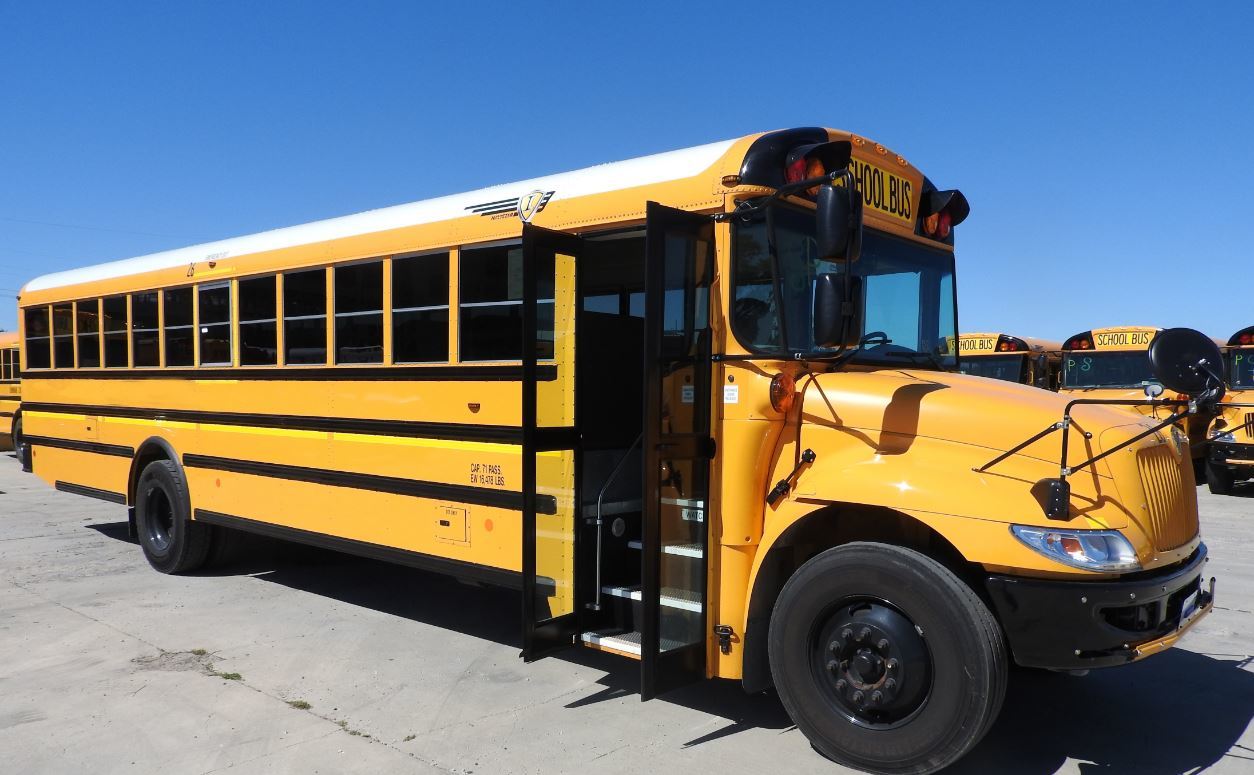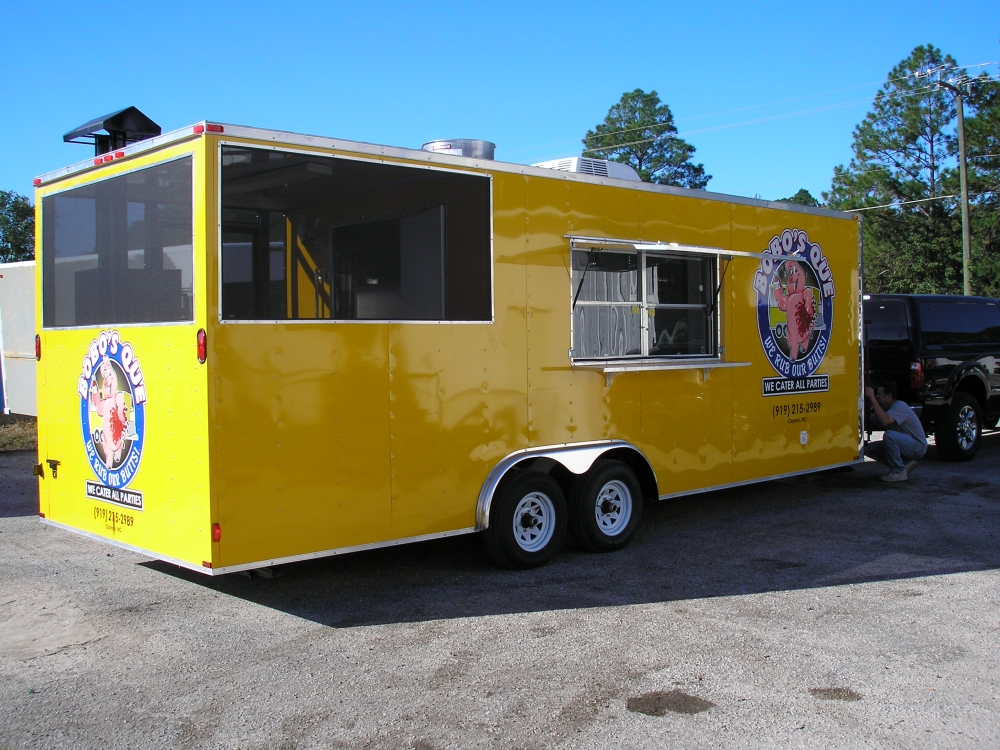First, it was old delivery trucks that were converted into gourmet food trucks. Today, an increasing number of food vendors are serving meals from a converted school bus that’s been transformed into a commercial kitchen. In today’s post, we evaluate some of the best menu ideas we’ve seen on these converted school buses often referred to as food “skoolies” to help you determine if this type of build is the right choice for your business.
Before jumping on the school bus bandwagon there are some important considerations to think about. First, a converted bus is a lot larger and longer than a standard food truck. According to Wikipedia, the length of an average food truck is 45 feet. Most floor plans for standard food trucks don’t exceed 20 feet in length.

Thinking about converting a school bus into a mobile kitchen? It is possible.
The extra space available with a bus can be an advantage or disadvantage to vendors depending on how you look at it. One advantage is you can work in a much larger commercial kitchen. That means you can comfortably fit more employees inside the bus to crank-out orders at a rapid pace. This extra space also means offering a broader range of menu items can be offered. Alternatively, you could use the extra space for food storage. Some food buses have even used the extra space to create limited indoor seating inside their vehicle. You are only limited by your own imagination on how to use the extra space.
Now for the disadvantages. If you operate in a large city, it’s going to be harder to navigate tight urban streets with a bus. It’s a whole lot harder to find street parking when you’re trying to find a 45-foot long spot. Not an easy thing to do in most downtown areas!
The other downside rarely reported on these buses is that the gas mileage stinks. It’s not uncommon to get between 4 – 6 miles per gallon of gasoline. Of course, how you drive the bus and environmental variables will have an impact on that estimate too. At the time of writing gas prices are low (relatively speaking). But in the unlikely scenario we see gas prices go up to $3.00 or more nationally that could really impact your profitability and might put you at risk of going out of business.
No matter how you spin it, you can get around more economically with a food truck in most situations. If you operate a trailer, you might be able to pull your food unit for 15 – 20 miles per gallon of gas. Depending on how far you plan to travel for events, this decision to convert a bus that could mean adding thousands of dollars in annual expenses. Don’t take this decision lightly!
Five Awesome Menu Ideas That Work Well on Converted School Buses

Bobo’s BBQ Concession Trailer built by M&R Specialty Trailers and Trucks
Truth be told, you can execute any of these menu ideas on a food truck, trailer, or even a sprinter van in some instances. What a bus will allow you to do is go bigger with any of the menu concepts. Want to start an ice cream bus? You could offer 32 flavors or more! Planning a mobile coffee shop? You could offer on-vehicle seating that allows customers to temporarily escape the wind, rain, or cold at an outdoor event. Here are a few concepts that have worked well on a bus for other business owners:
The Coffee Bus: One a 45-foot long bus, you’ll be able to install all the equipment you need to match the beverage options of a brick-and-mortar coffee shop. The other nice option is the ability to create an long and attractive coffee bar on the outside of the vehicle allowing more customers to sit and enjoy their drink. If you plan to operate this business in a warmer, year-round climate then operating a stationary coffee bus can be an exceptional option. There are many coffee shops operating out of converted shipping containers, but buses can work just as well.
The Crepe Bus: Amazing Crepes in White Fish, Montana, is an excellent example of a crepe bus. On this unit, the operators serve a variety of sweet or savory crepe options, including ham and cheddar or Nutella and banana. Some unique beverages are also served from this unit like house made ginger lemonade! It’s a winner.
The Burger Bus: You won’t need a full-size school bus to serve mouth-watering burgers. One popular example of a burger bus in action is Bernie’s Burger Bus in Texas. Bernie’s Burger Bus has grown in popularity over the years and now has multiple units operating in the state.
The Ice Cream Bus: With a bus, you can offer an extensive range of ice cream and soft-serve options. Whether you want to compete with flavor options brick-and-mortar competitors or offer a jaw dropping range of desert options from soft-serve to snow cones this can be a great option. The only aspect you’ll want to keep in mind is that ice cream and soft-serve machines require a lot of energy to power. You will need a lot of generator power to keep your product cool.
Full-Service Restaurant Bus: As mentioned previously, one of the advantages of a bus is that you can build in a lot of cooking equipment and food storage too. This allows you to serve multi-course meals that smaller food trucks can’t realistically pull off.
You’ll notice that most food trucks have a lean menu. Many mobile units focus on serving 3 – 5 core items. A bus, on the other hand, will enable you to serve a much larger menu that reflects what you would expect to see at a restaurant. This gives you the potential advantage of serving a much larger menu. You could also serve bigger traditional meals including sides and all the fixings.
If you’re trying to decide if a bus, food truck, trailer or other vehicle is best for your business, give us a call. We’ve been manufacturing mobile food units for over 15 years and can help you determine the right type of custom build unit that matches your needs.
